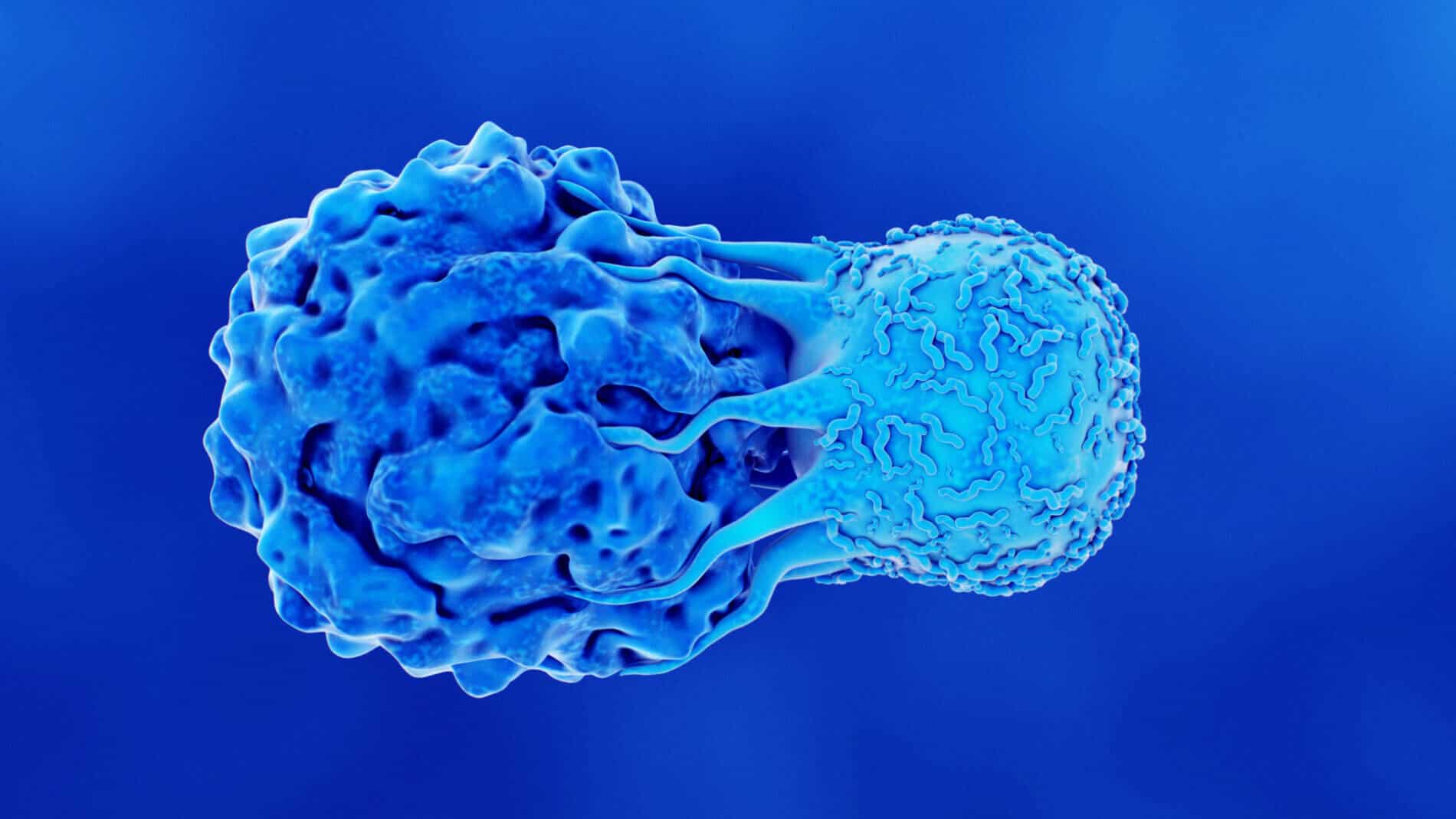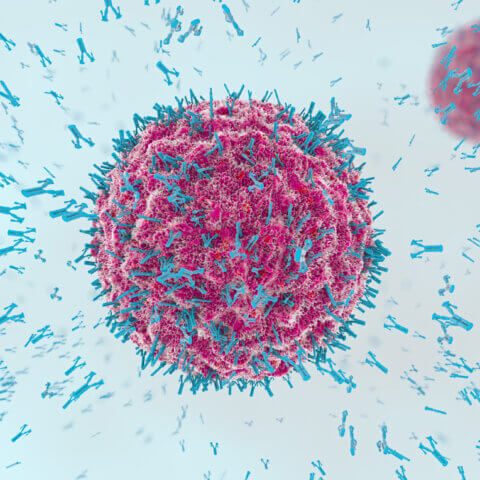Last Updated: January 7, 2026, 8 am UTC
Beginning in 2017 with the approvals of tisagenlecleucel (Kymriah™) and axicabtagene ciloleucel (Yescarta™), chimeric antigen receptor (CAR) T-cell therapies have changed the treatment paradigm for patients with certain hematologic malignancies. Since those initial approvals, three other CAR T-cell therapies have been approved for various hematologic malignancies, but many challenges still limit the therapeutic efficacy of current CAR T-cell therapies and their use in solid tumors.
In our previous post, we covered the background and current development landscape for CAR T-cell therapies. In this post, we address the advantage and challenges of this approach, strategies for managing cytokine release syndrome (CRS), and the future of CAR T-cell therapy.
Advantages and challenges of CAR T-cell therapy[1],[2],[3]
CAR T-cell therapy has a number of advantages over other immuno-oncology treatments, including:
- HLA-independent antigen recognition, enabling universal application
- Selective modification of specific T-cell subtypes
- Rapid generation of tumor-specific T cells
- Minimal risk of graft-versus-host disease
- Potential for lasting immunity even after a single infusion since it is a living “drug”
- Additional modification capability of the CAR construct
However, CAR T-cell therapy is also associated with a variety of challenges and limitations, including:
- High cost
- Inadequate training of workforce
- Length of time required for T-cell processing and modification
- Antigen escape
- Tumor infiltration
- Adverse events, including cytokine release syndrome, tumor lysis syndrome, and neurologic toxicity
- On-target, off-tumor toxicity (e.g., B-cell aplasia)
- Off-target, off-tumor toxicity (e.g., agammaglobulinemia)
Managing cytokine release syndrome (CRS)
The reported incidence of CRS in recent trials ranges from 50 to 93 percent,[4] with symptoms spanning the spectrum from mild flu-like symptoms to severe, life-threatening systemic inflammatory responses. Currently, tocilizumab, a monoclonal antibody that competitively inhibits the binding of interleukin-6 (IL-6) to its receptor and hinders IL-6 from exerting its pro-inflammatory effects,[5] is considered first-line treatment for mitigating moderate to severe CRS. In cases where tocilizumab is not effective, steroids have been used. Additionally, in August 2017, the FDA approved humanized immunoglobulin (IG)-1 anti-human immunoglobulin (anti-hIL)-6R for treatment of CRS. To date, prophylaxis with tocilizumab has not been shown to reduce the incidence of CRS.
Future of CAR T-cell therapy: expanding into solid tumor indications
In contrast to hematological malignancies, solid tumor CAR T-cell therapy is limited by the ability of the cells to traffic to and infiltrate the tumors. Solid tumors often have a physical barrier (such as the tumor stroma) that limits the penetration of the CAR T cells. In addition, the microenvironment surrounding solid tumors is often immunosuppressive.
One current strategy to overcome these challenges involves direct tumor administration (rather than systemic delivery), an approach that limits the need for the CAR T cells to move to and infiltrate the tumors. Additionally, the direct administration route can help to reduce on-target, off-tumor toxicities by limiting interaction with normal tissues.[6] Other strategies being explored focus on improving CAR T-cell trafficking using receptors on CAR T cells that match tumor chemokines and engineering CAR T cells that can express heparinase, an enzyme that can degrade the physical tumor stroma barrier, thereby increasing tumor infiltration and antitumor activity.6
Looking forward, we see continued investment in CAR T-cell therapies as researchers seek to answer key clinical questions such as:
- Can CAR T-cell therapy be used earlier in the course of treatment?
- Can CAR T-cell treatment replace autologous transplant?
- What is the role of CAR T-cell therapy in maintenance?
- How can CAR T-cell treatment be made safer?
- How can we use dual or tandem CARs to target multiple antigens?
- Can we engineer CARs to be more effective in solid tumors?
- Can CAR T-cell therapy be given in combination with other agents?
With ongoing research, we hope to see faster, more cost-effective manufacturing and cell expansion using off-the-shelf products with improved safety profiles, making CAR T-cell therapy more accessible and affordable to the patients who need it. With more than 170 hematology and oncology clinical trials completed through every phase in the past five years, including 19 oncological cell and gene projects, Premier Research’s clinical trial expertise helps you get from brilliant idea to life-changing reality. Click here to learn more.
[1] Zhao Q, Chen Y, Francisco NM, Zhang Y, Wu M. The application of CAR-T cell therapy in hematological malignancies: advantages and challenges. Acta Pharm Sin B 2018;8(4):539-551.
[2] Gauthier J, Yakoub-Agha I. Chimeric antigen-receptor T-cell therapy for hematological malignancies and solid tumors: Clinical data to data, current limitations and perspectives. Curr Res Transl Med 2017;65(3):93-102.
[3] Salmikangas P, Kinsella N, Chamberlain P. Chimeric antigen receptor T cells (CAR T cells) for cancer immunotherapy – moving target for industry? Pharm Res 2018;35(8):152.
[4] Shimabukuro-Vornhagen A, et al. Cytokine release syndrome. J ImmunoTher Cancer 2018;6:56.
[5] Sebba A. Tocilizumab: the first interleukin-6-receptor inhibitor. Am J Health Syst Pharm 2008;65(15):1413-1418.
[6] Sterner RC, Sterner RM. CAR-T cell therapy: current limitations and potential strategies. Blood Cancer J 2021; 11(4): 69. Available at https://doi.org/10.1038/s41408-021-00459-7. Accessed June 23, 2021.

 Webinar
Webinar 


 Perspectives Blog
Perspectives Blog 